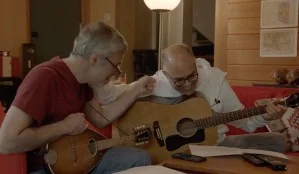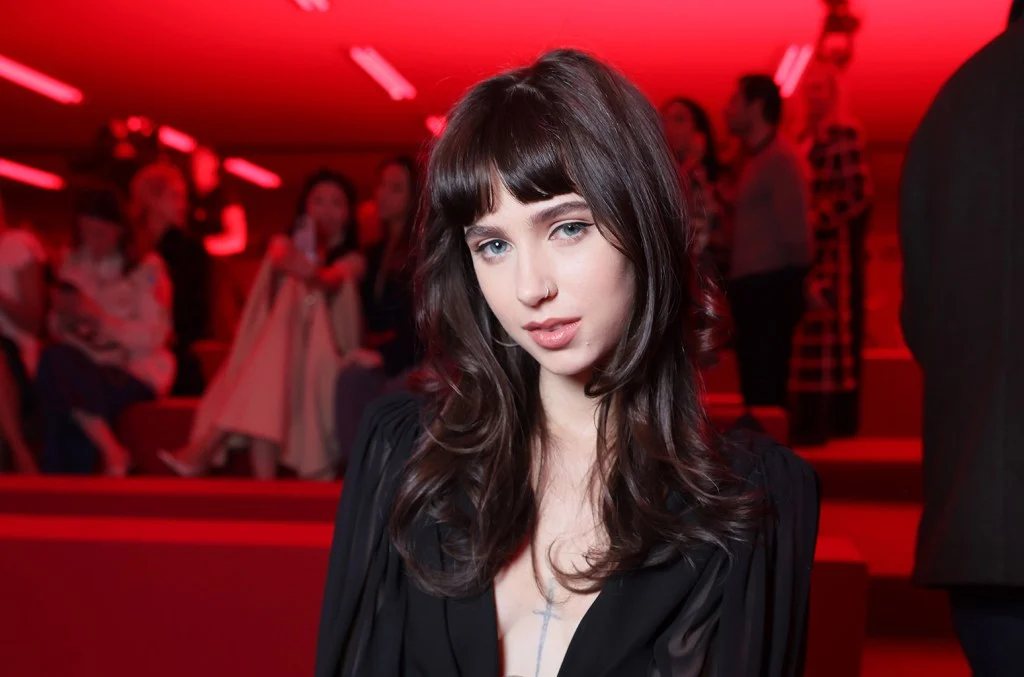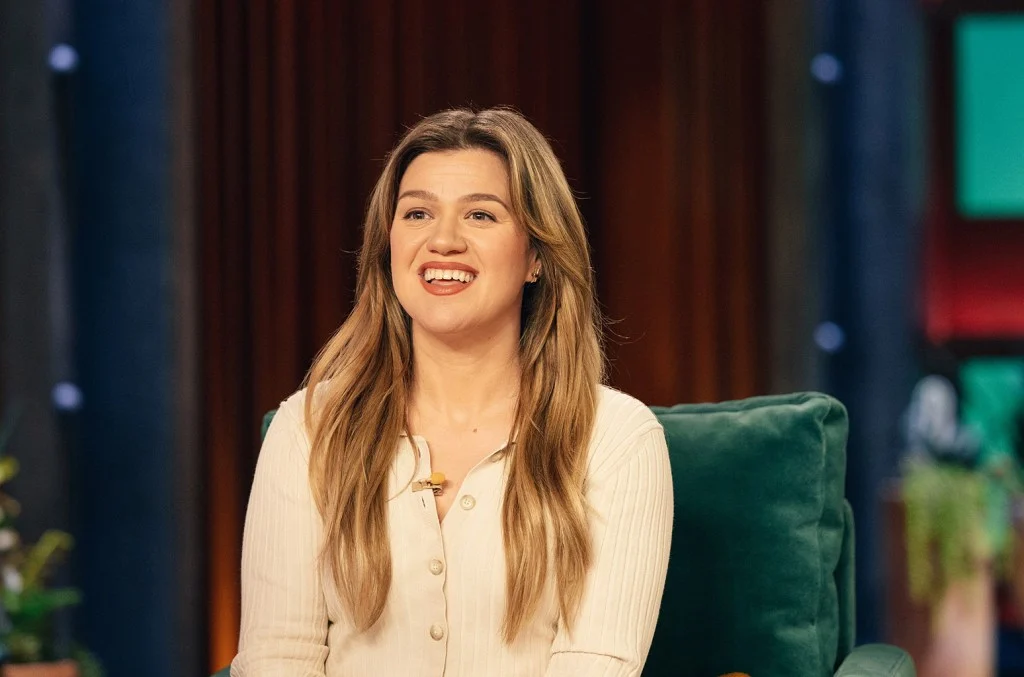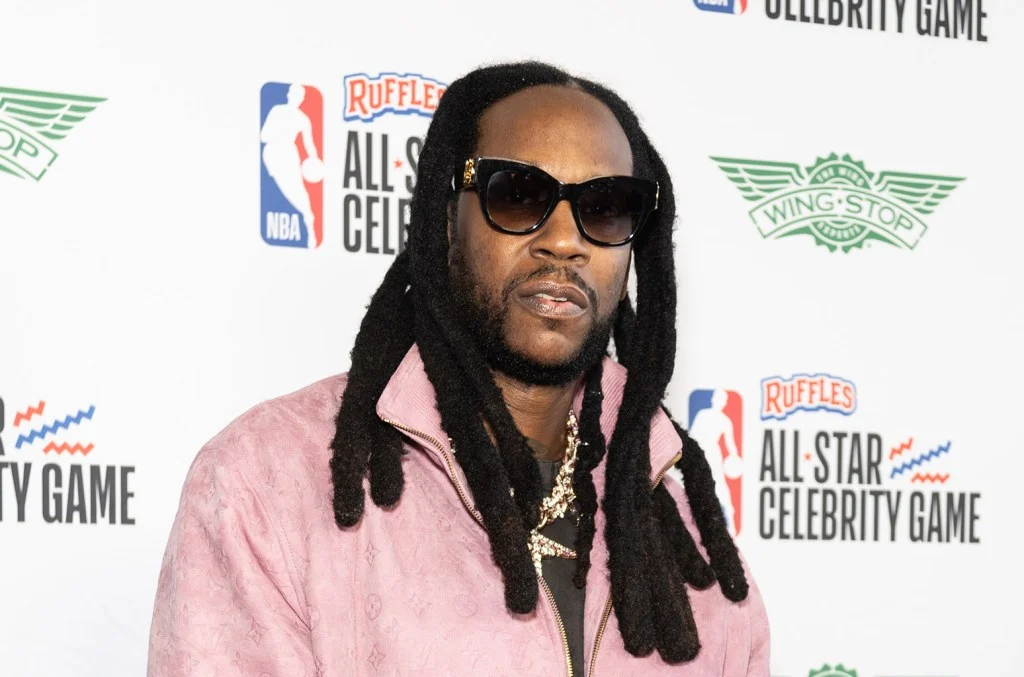Music
Page: 301
Lewis Capaldi made a rare onstage appearance at Tom Walker‘s charity concert in Edinburgh, Scotland.
Capaldi, who announced he was taking a step back from touring in 2023, was the surprise guest at a benefit show on Friday (May 2) for the Campaign Against Living Miserably (CALM) at Assembly Halls.
Fans at the benefit gig were told to stay for a special guest after Walker’s set, with the promise of another surprise appearance alongside him and Nina Nesbitt, the BBC reports. Concert-goers were then stunned when Capaldi stepped out onstage for a six-song performance that ended with his hit “Someone You Loved,” which spent three weeks at No. 1 on the Billboard Hot 100 in 2019.
“Lewis Capaldi being a surprise guest was the best thing ever. What a gig,” one lucky fan wrote on X. Another added, “lewis capaldi coming out at tom walker oh i’m going to bawl.”
Trending on Billboard
Attendees at the show were asked not to film any of the sets, with their phones stored in sealed Yondr pouches.
Friday’s event, held ahead of this year’s Mental Health Awareness Week (May 12-18), marked the first of three phone-free gigs aimed at raising funds for CALM, a suicide prevention organization. The next show, on Tuesday (May 6), will feature Walker alongside Declan McKenna and Bradley Simpson at Stirling’s Albert Halls. And the final show will take place on May 10 at Glasgow’s Old Fruit Market, with performances by Nathan Evans, Saint PHNX and Caity Baser.
Capaldi announced he was taking a break from touring in a message posted to Instagram in June 2023, just days after struggling to perform “Someone You Loved” during his set at the Glastonbury Festival. Fans rallied to help him finish the song by lending their voices.
“Thank you to Glastonbury for having me, for singing along when I needed it and for all the amazing messages afterwards,” he wrote. “It really does mean the world.
Capaldi continued, “The fact that this probably won’t come as a surprise doesn’t make it any easier to write, but I’m very sorry to let you know I’m going to be taking a break from touring for the foreseeable future.”
The Scottish artist had previously been open about his struggle with Tourette’s syndrome, revealing his diagnosis in September that year. Months later, in an April interview with the U.K.’s The Times, Capaldi shared that he had been struggling to control his tics while performing, and admitted there may come a day when he would quit music because of it.
Anderson .Paak and Mariah Carey are working on new music together.
During a Friday (May 2) appearance on the social media series Track Star — where guests try to identify mystery songs — the 39-year-old singer-songwriter and producer correctly guessed Carey’s “Always Be My Baby,” which reached No. 1 on the Billboard Hot 100 chart in 1996.
“This would be Mariah Carey. The Mariah Carey,” said .Paak, who was wearing a T-shirt featuring Mariah’s face. “I remember in like 5th grade, or something, watching the music videos and having a huge crush. We’re working on some music on her new album.”
News of a musical collaboration between .Paak and Carey, 56, comes after the two were seen holding hands after the iHeartRadio Music Awards in March 2025, People reports. .Paak helped the superstar singer onto the stage as she accepted the icon award at the ceremony.
Trending on Billboard
“Thank you iHeart for this incredible honor,” Carey said during her speech. “As a kid, I used to listen to my favorite artist on the radio and dream of being on the airwave myself. Now, for those of you who may not know what airwaves are, think of it as the non-Wifi version of streaming, OK?”
Around the same time, the pair were reportedly also spotted leaving a restaurant together in West Hollywood. Prior to that, .Paak and Carey were seen holding hands following the conclusion of her Christmas tour in December 2024, according to People.
Carey, recently nominated for induction into the Rock & Roll Hall of Fame, confirmed in an early April interview with the Associated Press that she’s working on a new album, but she did not share additional details. Her most recent studio album, Caution, was released in 2018.
In celebration of the 20th anniversary of The Emancipation of Mimi, Carey announced a special expanded edition of the album. The upcoming release will include bonus tracks, unreleased remixes and collaborations, instrumentals, a cappella versions, and live recordings. The two-disc vinyl edition is set to drop through Def Jam Records/UMe on May 30.
From career milestones to new music releases to major announcements and those little important moments, Billboard editors highlight uplifting moments in Latin music. Here’s what happened in the Latin music world this week.
Explore
See latest videos, charts and news
See latest videos, charts and news
Honored in Los Angeles
Earlier this week, Natalia Jiménez was honored by the City of Los Angeles with an Official Proclamation presented by District 14 Councilvmember Ysabel Jurado. The tribute took place at City Hall as part of the Fiesta Broadway celebrations, where the Spanish singer-songwriter was also named the 2025 Queen of Fiesta Broadway—she will also headline this year’s event.
“It means so much to me because of my strong ties to Mexico and the entire Latino community,” she said in a press statement. “I’ve lived many years in both Mexico and the United States, and I understand what it means to migrate and seek new opportunities. I’m proud to be part of such a united community, especially in challenging times. Thank you for inviting me, for this recognition, and for allowing me to celebrate our culture and language with all of you.”
Trending on Billboard
Making History on Tour
In other L.A.-related news, Rauw Alejandro made history at the Intuit Dome as the first Latin artist to perform three consecutive sold out concerts. During his Cali shows—part of his Cosa Nuestra world tour—the Puerto Rican artist invited surprise guests Marconi Impara and Yan Block to perform “Espresso Martini” from his album Cosa Nuestra.
Produced by Live Nation, the Broadway-inspired set — a nod to Rauw’s new musical era that symbolizes elegance, maturity and glamour —includes a live band in tow. The Cosa Nuestra stint wraps May 31 in Miami. The “Todo de Ti” hitmaker will perform a four-day sold-out residency from June 5 to 8 at the Coliseo de Puerto Rico José Miguel Agrelot in San Juan before taking the tour to Europe.
Rauw Alejandro
Marco Perretta
Heartfelt Bad Bunny Cover
Laura Pausini has paid a heartfelt tribute to Bad Bunny by releasing her own version of his song “Turista,” part of his chart-topping album Debí Tirar Más Fotos. Produced and arranged alongside her husband and musician, Paolo Carta, Pausini delivers a melancholic cover backed by weeping piano melodies and her potent vocals. “I listened to ‘Turista’ and instantly fell in love with it…so I sang it,” the Italian-born, Spanish-singing artist expressed on Instagram. “Some songs don’t need to be part of a new album or promoted as a single. When a song touches your heart, it’s good in any style, at any time. Bravo Bad Bunny.” Listen to the track below.
Perreo: A Revolution
On the heels of dropping her ultra-personal, ultra-vulnerable, and ultra-experimental album Latinaje, Cazzu presents her first-ever book, Perreo: Una Revolución. “This book tells, vindicates, and denies the urban music industry specifically, about life as a woman in music or in any field. But above all, it aims to be a contribution to continue building equality,” she wrote on Instagram. “I dedicate it to the women who love reggaeton, to those who hate it, to those who want to sing, compose, or produce, to my female colleagues who barely made it and continue to resist […] I also dedicate this to my male colleagues and the artists who inspired me,” she adds, admitting that thoughts of writing her own novel began four years ago. The book is available in all bookstores, as an ebook, and an audiobook (narrated by Cazzu).
Mase is considering making an appearance at Diddy‘s upcoming trial. The former Bad Boy artist opened a recent episode of his sports talk show It Is What It Is by asking viewers to vote on whether he should pull up or not. “I wanna put it out to the fans,” he said. “I’ll let the […]
One of the great music cities of America, the Twin Cities (Minneapolis and St. Paul, MN) gave us Prince, The Replacements, Jam & Lewis, Hüsker Dü, Soul Asylum, The Time, Semisonic, The Jayhawks, Atmosphere and more. Not to mention serving as early stomping grounds for Minnesota-born legend Bob Dylan and, more recently, a pre-fame Lizzo […]
One of the most acclaimed new musicals on Broadway right now has all the charm of a corpse — literally.
The unlikely subject of Dead Outlaw is the life — and death — of Elmer McCurdy, a late 19th-century ne’er-do-well who came to an early end but whose corporeal form enjoyed a bizarrely long afterlife as a well-preserved (well, for a time) traveling oddity. On paper, it might not sound like typical musical fare, but thanks to an expert creative team — led by co-composers David Yazbek and Erik Della Penna, director David Cromer and writer Itamar Moses — Elmer’s tale becomes not just strangely humorous and poignant but deeply thought-provoking.
Yazbek has a résumé stacked with great musical adaptations of films — including The Full Monty, Women on the Verge of a Nervous Breakdown, Tootsie and The Band’s Visit, the latter of which won him the Tony for best original score. But Dead Outlaw is an increasingly rare breed of show on Broadway these days, based on no pre-existing intellectual property and not driven at the box office by celebrity names above its marquee.
So far, that’s working out well: Dead Outlaw just received a best musical nomination for the 2025 Tony Awards, one of seven nods for the show also including best score for Yazbek and Della Penna’s music, which is performed by a crackerjack band onstage. Yazbek is rarely working on one show at a time — among many overlapping projects, he’s also creative consultant on the Tony-nominated Buena Vista Social Club — but he and Della Penna took the time post-opening to talk to Billboard about Dead Outlaw and why often, on Broadway, smaller is better.
Trending on Billboard
How did you become aware of McCurdy’s crazy story in the first place, and how did you know it would lend itself well to musical form?
David Yazbek: The answer to the second part of that question is not until basicallyopening night (laughs). I heard the Elmer McCurdy story like 30-something years ago; when his body was discovered in 1976 by The Six Million Dollar Man TV crew it was a national story briefly, and I think a college friend’s mother sent him clippings about it. He told me the story and it really stuck, especially the themes of identity and death and mortality and greed and fame. For years and years, anyone who heard the actual true story was just amazed that it actually happened. And one of the people I told it to eventually was Erik, who I was in a band with and had written some songs with, and he got hooked.
Erik Della Penna: It was just such an odd story that it’s immediately compelling — anybody I tell this story to is immediately interested. I consider myself a student of American music and of history in general, so this kind of hit all my buttons for those interests
Yazbek: And those factors don’t make it an obvious thing for a musical or a play or whatever, but…
Della Penna: I feel like a musical is sort of the best way to tell the story. Theater really succeeds when it in some way represents an otherworldly environment, and there’s only scant facts in the Elmer McCurdy story. So it’s the perfect way to present them and to really show the depth of it, and not just the cold facts — to bring some humanity to it and relatability.
Yazbek: We both had the instinct that that would be the way to tell the story, and that we could write the songs to tell the story. And, you know, I guess we’re right. So far.
Erik Della Penna (left) and David Yazbek
Jennifer Small
The ideas it brings up about achieving fame and notoriety at any cost — about this very American obsession with being remembered for something, anything — feels especially timely…
Yazbek: I have his memory of when I was maybe 15, I wrote a short story for a class, and it was kind of about that ephemeral idea that for some reason being remembered will afford you some degree of immortality. It’s just another f–king illusory comfort, but it really does drive people, sometimes for their entire lives — this idea of, “Oh sh-t, I’m gonna die. But wait a minute, I’ll be remembered! I’ll have a legacy!” Even the word legacy is dangerous. It’s why some people amass much more wealth than they should and put their name on buildings.
Della Penna: It doesn’t even work with buildings. Like, [New York’s] Alice Tully Hall is now David Geffen Hall, so what happened to Alice Tully? Now we all forget about her?
The onstage band is central to the show. Did you have a particular sonic palette or influences you were drawing upon in writing the music?
Della Penna: I think Yazbek asked me because my musical interests were in early 20th century American music…
Yazbek: That’s pretty accurate. I don’t read reviews, but people keep throwing little bits at me, and [the New York Times review] was referencing an album of mine called Evil Monkey Man, and Erik is all over that album, and just like in this show, he’s playing lap steel, different electric and acoustics, and there’s some banjo. That’s sort of at the root of all of this: Erik and I are both capable of being very eclectic in our songwriting. We both love this genre — I don’t want to call it Americana, but like you just said, that early 20th century American music…
Della Penna: And that includes Cole Porter, Irving Berlin, Jimmy Rogers…
Yazbek: And all of that stuff is very apropos for this show. The show is 100 years of American history. And from the very beginning, we sort of said, “Let’s Lennon and McCartney this” — in other words, let’s not be counting bars and who wrote what, let’s go all in, and that was part of the fun of it.
Though you do have two standout performances in central roles — Tony nominees Andrew Durand as Elmer and Jeb Brown as the narrator and bandleader — this truly feels like an ensemble piece. The cast is a band too, in a way.
Della Penna Absolutely — the cast as a band, that’s right. We were thinking about that for a while, getting a star in there [as] the narrator. I thought that would be more guaranteed juice for this to move [to Broadway]. But I also felt bad that it was sort of a cop out for the quality of the piece and the quality of the music. So I’m glad where it landed.
Yazbek: Yeah, me too. I was talking to somebody, maybe one of our producers, about how there’s the artistic currency of a show, but then there’s also, like, the currency for marketing the show itself. And to me, the currency for marketing the show is quality with a capital Q. The star of the show is how great everyone is who’s in it, and its uniqueness and its depth. Like, can’t you market that? (laughs)
Dead Outlaw
Matthew Murphy
Dead Outlaw started out at New York’s Minetta Lane Theater as part of Audible’s theater series there. How did that help launch the show?
Yazbek: There are several independent theaters, regional and local, that should have just immediately said, “Oh, the Band’s Visit guys. Oh, this music, oh, this story. Yeah, sure, here’s a slot.” And for some reason, I guess because we didn’t have a star and it wasn’t [preexistent] IP, they didn’t do it. I’ve had at least two artistic directors tell me how much they regret not doing it, which is very satisfying. But it was [Audible’s] Kate Nathan who said, “Oh, I think we can do this. I think we want to do this.” And as the budget grew, she just saw us through the development. That takes vision.
David, you’ve done big, splashy shows, and you’ve done smaller shows like this one. As creators, does doing a smaller-scale show allow you to do something that a big budget spectacle doesn’t as much?
Yazbek: Part of it is like independent film versus studio films. There are producers out there who don’t really understand how to bring quality, other than just bringing the big flying helicopter or whatever the money can buy. There are economic exigencies to putting up a show on Broadway and keeping it running. And from the very beginning [with Dead Outlaw], I had that in my head. When we first were thinking, “Oh, well, let’s just do this as a band show with one narrator, and that narrator’s in the band” — to me, that was like, how could you say no to that? It’s just got to be good, but it’ll also be so inexpensive that you could put it in a playhouse and it could run as long as people want to see it without us having to charge $800 a ticket. Sometimes great art is done with a limited palette, as opposed to with anything you want. How much value is there in seeing these eight performers do 60 parts, and they’re great? Like, that’s f–king theater right there.
Clairo proved the “Apple” doesn’t fall far from the tree at Charli xcx‘s tour stop in Brooklyn, New York on Wednesday night (April 30). In attendance for the first of Charli’s four sold-out nights at Barclays Center on the ongoing Brat Arena Tour, the “Sexy to Someone” singer was filmed doing the viral choreography to […]
Amidst all the gruesome killings on Only Murders in the Building, something else about the show stuck out to Kelly Clarkson: the onscreen romance between Meryl Streep and Martin Short’s characters, about which the musician wrote a new song called “Where Have You Been.” Released Friday (May 2), “Where Have You Been” finds Clarkson singing […]
2 Chainz is set to premiere a new short film he made with Omar Epps at the Atlanta Film Festival on Saturday. In an interview with Variety on Friday (May 2), 2 Chainz said his new film Red Clay felt like a fitting extension of his music. “I tell stories through my music, always hoping […]
YEAT paid homage to Drake with a cover of “Feel No Ways” during his Coachella set in April, and the electronic cover of the Drizzy fan-favorite received an official release on DSPs on Friday (May 2). Explore See latest videos, charts and news See latest videos, charts and news The “Feel No Wayz (Yeat Mix)” […]

 State Champ Radio
State Champ Radio 









